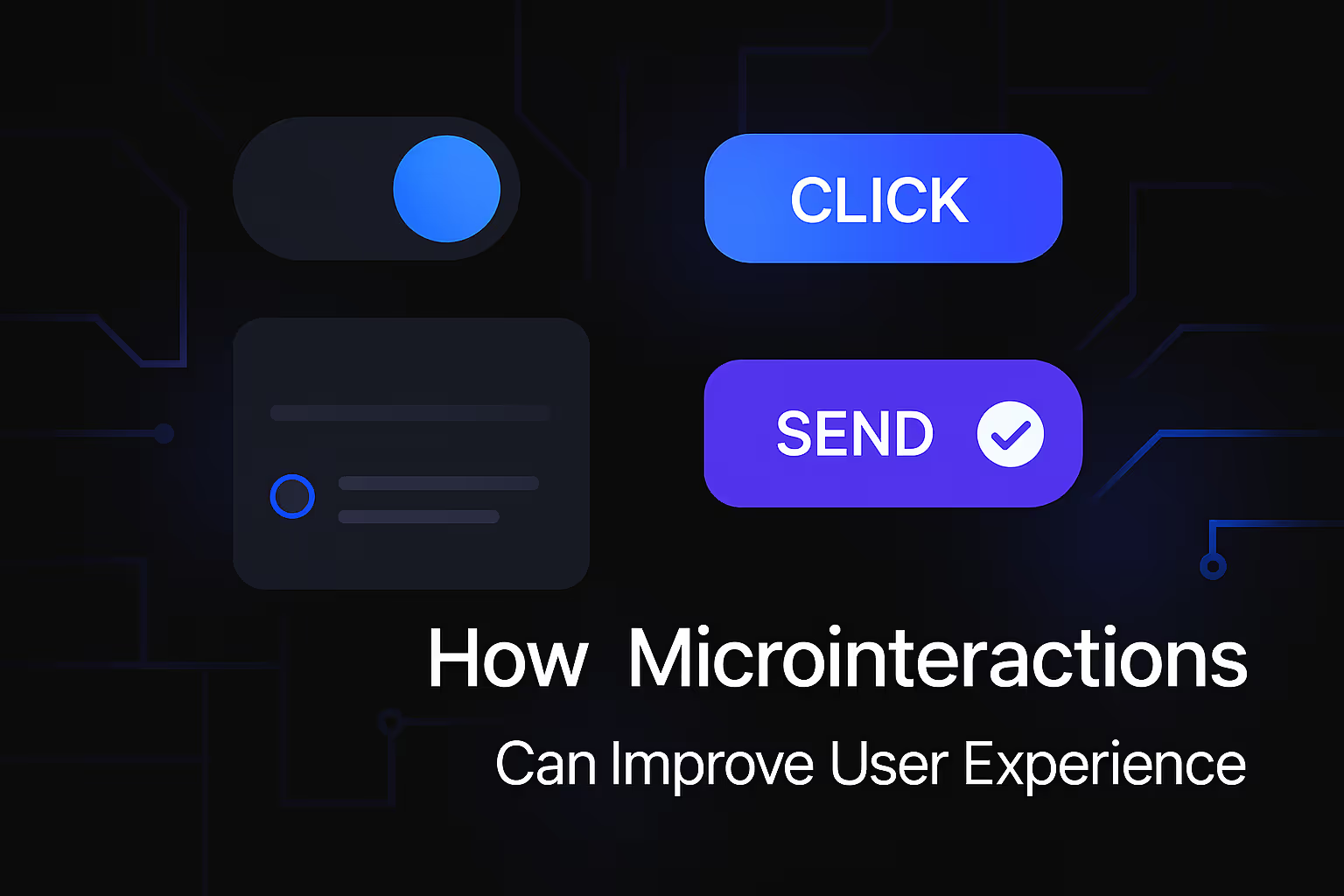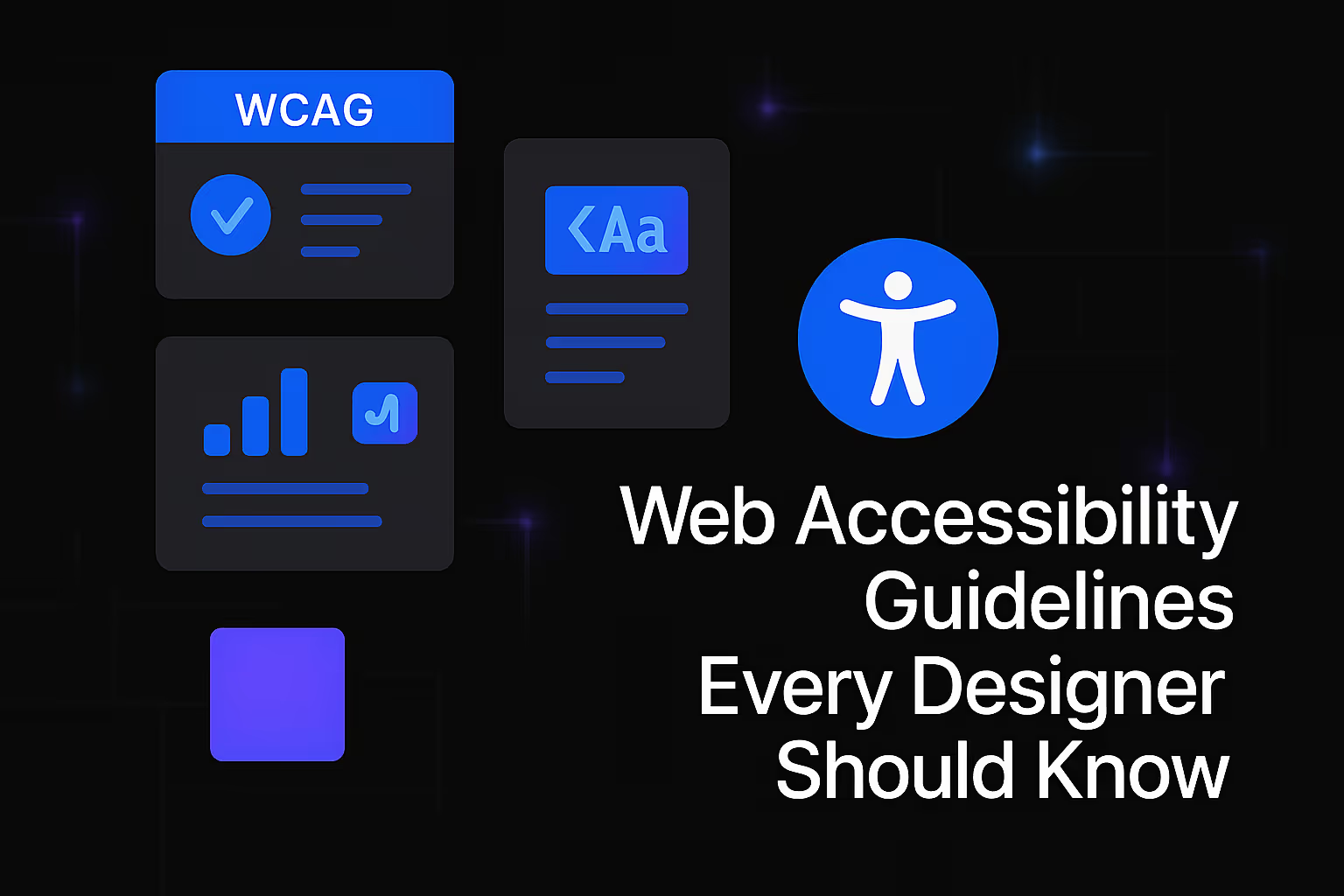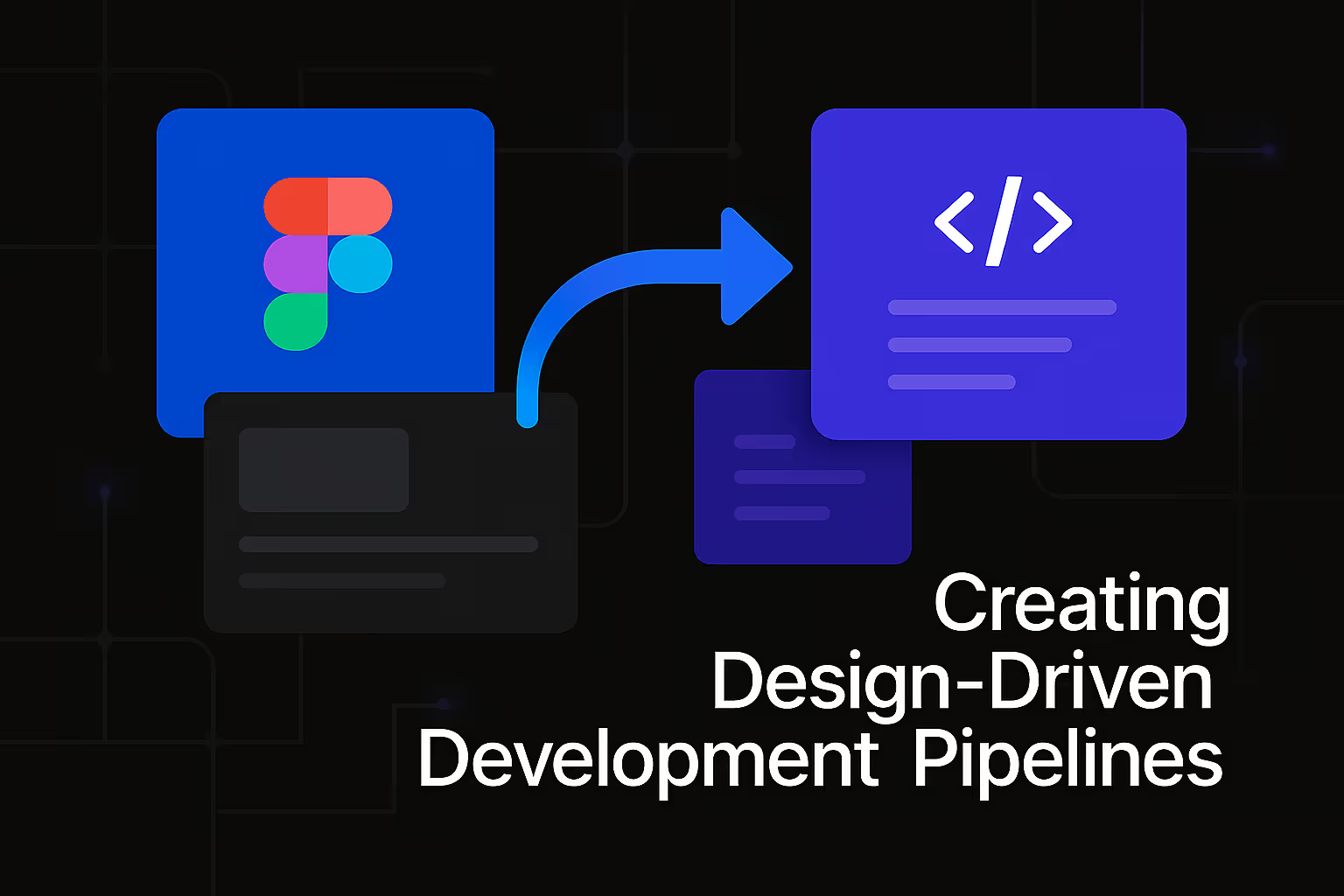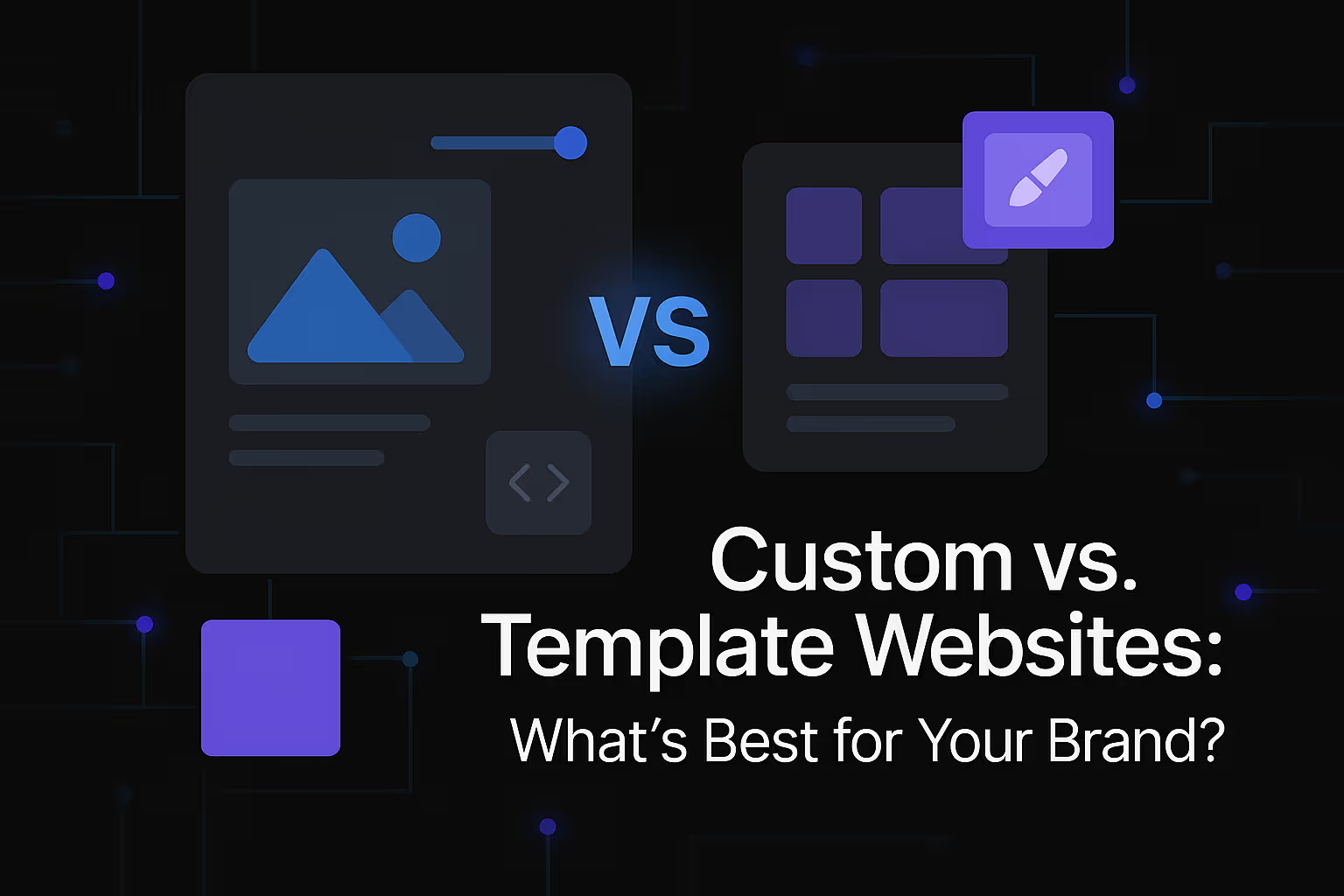How Microinteractions Can Improve User Experience

In the vast and ever-evolving digital landscape, where applications, websites, and smart devices clamor for our attention, what truly sets a memorable user experience apart from a mundane one? Often, it's not the grand, sweeping gestures but the subtle, almost imperceptible nuances that make all the difference. These are the microinteractions – small, single-purpose moments of design that guide users, provide feedback, and ultimately, inject a sense of humanity and delight into our digital interactions. Far from being mere aesthetic flourishes, these tiny design elements are the unseen architects of delight, profoundly enhancing usability, fostering engagement, and building deep trust with users.
The modern user expects not just functionality, but a seamless, intuitive, and even enjoyable journey. In this competitive environment, the ability of a product to communicate effectively and responsively with its users through these miniature interactions becomes a significant differentiator. Understanding, implementing, and refining microinteractions is no longer a luxury; it's a fundamental pillar of exceptional user experience design, directly impacting everything from task completion rates to brand loyalty.
Understanding the Essence of Microinteractions
At its core, a microinteraction is a contained product moment. It is a single use case, a tiny piece of functionality, that exists to achieve a specific task. Think about the simple act of liking a post on social media – the heart icon filling with color, perhaps a subtle animation, a small number incrementing. Or consider the tactile feedback when you silence your phone, the subtle shimmer that appears when you click a button, or the concise message confirming a successful email send. These are all prime examples.
While seemingly insignificant on their own, microinteractions are the atomic units of a larger user experience. They address a common pattern of "trigger-rules-feedback-loops & modes." A trigger initiates the microinteraction, which can be user-initiated (like clicking a button) or system-initiated (like an incoming notification). Rules define how the microinteraction responds to the trigger. Feedback is the visual, auditory, or haptic response that informs the user about what's happening. Finally, loops and modes govern how the microinteraction progresses and if it changes behavior under different conditions. This structured approach ensures that every tiny interaction serves a clear purpose, moving beyond mere decoration to become an integral part of the user's journey. They bridge the gap between human intent and machine response, ensuring that the user feels in control, informed, and valued.
The Profound Impact on User Experience
The influence of well-designed microinteractions ripples through the entire user experience, touching upon usability, engagement, brand perception, and even direct business outcomes.
Enhancing Usability and Clarity
One of the most critical roles of microinteractions is their ability to enhance usability by providing immediate and clear feedback. When a user interacts with an interface, they are constantly asking, "Did that work?" or "What happens next?" Microinteractions answer these unspoken questions in real-time. For instance, a loading spinner subtly communicates that the system is processing, preventing frustration and the impulse to click multiple times. An animated checkmark after a form submission visually confirms success, reassuring the user that their information has been received.
They effectively guide users through complex processes, breaking down potentially overwhelming tasks into manageable, understandable steps. Imagine trying to navigate an online checkout process without any visual cues that indicate progress or confirmation of actions. The ambiguity would quickly lead to abandonment. By providing discrete, instantaneous feedback, microinteractions reduce cognitive load, minimize user errors, and make the digital environment feel more predictable and intuitive. They act as a silent narrator, constantly reassuring the user and subtly directing their attention to where it needs to be, smoothing out any potential friction points. This continuous stream of information transforms potentially frustrating moments into moments of effortless interaction, contributing significantly to an intuitive design.
Fostering Engagement and Retention
Beyond pure functionality, microinteractions are powerful tools for fostering deeper user engagement and, consequently, improving retention rates. They inject personality and life into an otherwise static interface, making the experience feel more dynamic and responsive. The subtle bounce of an icon when a new notification arrives, the delightful sound accompanying a successful action, or a beautifully animated transition between screens can transform a utility into an enjoyable encounter. These small moments of delight create a positive emotional connection with the product.
When users feel acknowledged and even entertained by an interface, they are more likely to return. These small, thoughtful details demonstrate that the designers care about the user's experience down to the finest detail. This sense of being cared for cultivates loyalty. It's the difference between a functional product and a beloved one. The carefully crafted feedback loops and playful animations encourage exploration and repeated interaction, making the user feel more connected to the digital product. This subtle gamification of interaction keeps users invested, turning routine tasks into opportunities for a positive emotional response, which in turn significantly enhances user experience.
Building Brand Identity and Trust
Microinteractions are not just about functionality; they are also powerful reflections of a brand's identity and values. The specific choice of animation style, sound effects, or visual cues can subtly communicate a brand's personality—whether it's playful, sophisticated, efficient, or quirky. For example, a banking app might use subtle, reassuring animations to convey security and reliability, while a creative design tool might employ more vibrant and expressive interactions to reflect innovation.
By consistently applying these unique interaction patterns throughout a product, brands can create a distinctive and memorable digital presence. This attention to detail signals professionalism and a deep commitment to quality, which in turn builds trust with the user. When an interface responds reliably and thoughtfully, users perceive the underlying organization as equally reliable and trustworthy. In an era where digital presence is paramount, these small interactions contribute significantly to the overall perception and digital product design, differentiating one brand from another in a crowded market. They communicate without words, reinforcing brand values and fostering a stronger emotional bond.
Driving Conversions and Business Goals
Ultimately, the benefits of superior user experience often translate directly into tangible business outcomes, and microinteractions play a crucial, albeit often underestimated, role in this. By smoothing the user journey, reducing friction, and keeping users engaged, microinteractions can directly improve conversion rates. For instance, clear, immediate feedback on form validation can prevent users from abandoning a signup process due to uncertainty. Delightful animations during a purchase confirmation can reinforce the decision and encourage repeat business.
When users find an interface easy to use and enjoyable, they are more likely to complete desired actions, whether that's making a purchase, signing up for a service, or engaging with content. Microinteractions guide users toward these desired actions with precision and grace. They prevent confusion that leads to drop-offs and enhance the overall satisfaction that encourages users to become advocates. A well-designed sequence of microinteractions can significantly reduce the cognitive load associated with decision-making, leading to a higher completion rate for critical user flows. This direct link between refined interaction design and business success underscores their importance beyond mere aesthetics; they are strategic tools for achieving core business objectives.
Crafting Effective Microinteractions: Best Practices
Designing truly effective microinteractions requires careful consideration and adherence to several key principles. It's not about adding animations for the sake of it, but about purposeful design.
Intentional Design: Purpose Over Ornamentation
Every microinteraction must serve a clear purpose. Before designing any animation or feedback cue, ask: What problem is this solving? What information is it conveying? Is it guiding the user, confirming an action, or simply adding a moment of delight? If a microinteraction doesn't serve a specific function, it risks becoming a distraction or, worse, an annoyance. The goal is to enhance the user's understanding and experience, not to show off design capabilities. Unnecessary flourishes can detract from the product's core message and dilute its impact. The intentional design principle ensures that every element, no matter how small, contributes positively to the user's journey.
Consistency Across the User Journey
Consistency is paramount in design. Microinteractions should adhere to a unified design language throughout the entire product. Similar actions should elicit similar responses. For example, if saving an item generates a subtle checkmark animation in one part of the application, it should do the same in other parts. Inconsistent microinteractions can confuse users, undermine predictability, and erode trust. They make the interface feel fragmented and poorly constructed. A consistent approach ensures that users can intuitively understand and anticipate responses, making the overall experience feel cohesive and professionally crafted. This also reinforces brand identity and simplifies the learning curve for new users.
Subtlety is Key: Less is Often More
While microinteractions can be delightful, subtlety is key. They should typically be brief, unobtrusive, and quickly understood. Overly elaborate or long animations can quickly become irritating and slow down the user experience. The power of microinteractions often lies in their gentle nature, guiding the user without demanding their full attention. They are background cues, not center-stage performances. The best microinteractions are those that users might not consciously notice but instinctively appreciate for how they smooth the flow. A gentle shimmer, a soft sound, or a quick change in state is often far more effective than a grand, complex sequence. They should enhance the interaction, not dominate it.
Feedback is Non-Negotiable
The primary function of many microinteractions is to provide feedback. This feedback must be immediate, clear, and relevant to the user's action. Whether it's visual feedback (e.g., a button changing color on hover), auditory feedback (e.g., a notification sound), or haptic feedback (e.g., a subtle vibration), it must communicate effectively. Users need to know that their input has been received and what the system is doing in response. Lack of feedback can lead to uncertainty, repeated actions, and frustration. The absence of feedback is often more jarring than overly enthusiastic feedback. It creates a void of communication that leaves the user guessing.
Considering Context and User State
Effective microinteractions also consider the context in which they occur and the current state of the user. An interaction might behave differently depending on the device being used (mobile vs. desktop), the network speed, or the user's current activity. For instance, a loading animation might be more elaborate on a fast connection but simpler on a slow one to avoid perceived delays. Similarly, a notification might be more prominent if the user is actively waiting for a response, but more subtle if they are deeply engrossed in another task. Personalization through microinteractions means adapting them to provide the most relevant and least intrusive experience possible. This thoughtful adaptation demonstrates a deep understanding of user needs and environmental variables.
Accessibility and Inclusivity
When designing microinteractions, it is crucial to consider accessibility. Not all users experience interfaces in the same way. Animations should be designed so that they don't trigger photosensitive epilepsy. Providing alternatives for auditory feedback (e.g., visual cues) or haptic feedback (e.g., on-screen text) ensures that the information is conveyed to all users, including those with disabilities. Text alternatives for visual animations, control over animation speed, and options to disable animations are all important considerations for creating an inclusive experience. Inclusive design ensures that the delightful aspects of microinteractions are accessible to everyone.
Common Pitfalls to Avoid
While the benefits are clear, there are common missteps that can diminish the effectiveness of microinteractions.
Overuse and needless complexity stand out as significant issues. Just because something can be animated doesn't mean it should be. Too many animations, or animations that are too long or intricate, can overwhelm users, slow down the interface, and quickly become annoying. Microinteractions should enhance, not distract. Another pitfall is inconsistency and confusion. As previously mentioned, a lack of consistent patterns for similar interactions can break the user's mental model and lead to frustration. Users learn by consistency, and violating those learned patterns creates a jarring experience
Ignoring performance implications is another critical mistake. Even small animations can impact load times and device performance, especially on older devices or slower network connections. Designers must work with developers to ensure that microinteractions are optimized and don't create bottlenecks. Finally, a lack of user testing means that assumptions about the effectiveness and clarity of microinteractions go unchecked. What seems intuitive to a designer might be confusing to a user. Real-world testing is essential to refine these subtle elements and ensure they truly serve their purpose.
The Future of Microinteractions in Digital Product Design
As technology continues to evolve, so too will the role and sophistication of microinteractions. We can anticipate even greater integration with AI and personalization, where microinteractions adapt dynamically based on user behavior, preferences, and even emotional states, offering an even more bespoke experience. Imagine an interface that subtly changes its feedback based on whether a user seems stressed or relaxed.
Cross-platform consistency will become increasingly vital as users seamlessly move between different devices and environments. Microinteractions will need to maintain a coherent identity and response across desktops, mobiles, smartwatches, and even augmented reality interfaces. The evolving role in immersive experiences like virtual and augmented reality is also significant. In these new dimensions, microinteractions will move beyond screens to encompass spatial awareness, haptic feedback on a much grander scale, and truly multi-sensory feedback that redefines how we interact with digital information in physical spaces. The possibilities are immense, promising even richer and more intuitive interactions in the future.
The Ripple Effect of Thoughtful Design
In conclusion, microinteractions are far more than just design eye candy. They are the fundamental building blocks of an exceptional user experience, quietly working to enhance usability, foster engagement, build brand trust, and ultimately drive business success. By guiding users with clarity, delighting them with subtle cues, and communicating effectively in every tiny moment, these unseen architects transform what could be a sterile digital interaction into a fluid, intuitive, and even joyful experience.
In today's highly competitive digital landscape, where user expectations are constantly rising, investing in the thoughtful design of microinteractions is no longer optional. It is a strategic imperative. Products that master these small moments will be the ones that stand out, creating loyal users and achieving lasting success. The ripple effect of these tiny details is profound, shaping perceptions, influencing behaviors, and ultimately defining the quality of our digital lives. They are the testament to the power of meticulous attention to detail, demonstrating that even the smallest elements can have the largest impact on how we perceive and interact with the digital world around us.
Similar Insights
Stay Updated with Our Insights
Join our newsletter for the latest trends and tips in web development and digital marketing.




